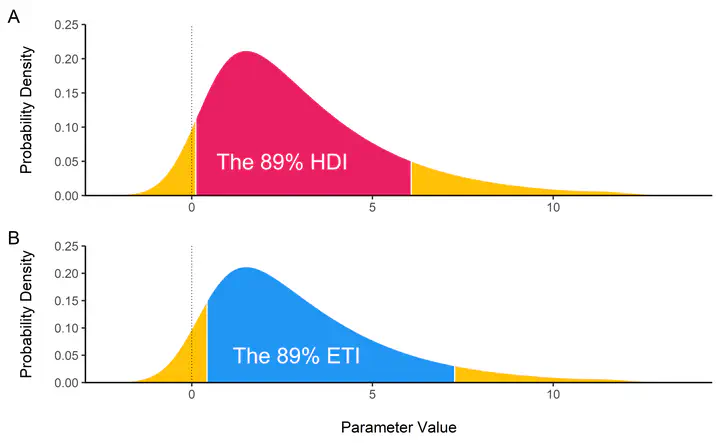bayestestR: Describing effects and their uncertainty, existence and significance within the Bayesian framework

Abstract
The Bayesian framework for statistics is quickly gaining in popularity among scientists, for reasons such as reliability and accuracy (particularly in noisy data and small samples), the possibility of incorporating prior knowledge into the analysis, and the intuitive interpretation of results (Andrews & Baguley, 2013; Etz & Vandekerckhove, 2016; Kruschke, 2010; Kruschke, Aguinis, & Joo, 2012; Wagenmakers et al., 2017). Adopting the Bayesian framework is more of a shift in the paradigm than a change in the methodology; all the common statistical procedures (t-tests, correlations, ANOVAs, regressions, etc.) can also be achieved within the Bayesian framework. One of the core difference is that in the frequentist view, the effects are fixed (but unknown) and data are random. On the other hand, instead of having single estimates of the “true effect”, the Bayesian inference process computes the probability of different effects given the observed data, resulting in a distribution of possible values for the parameters, called the posterior distribution. The bayestestR package provides tools to describe these posterior distributions.